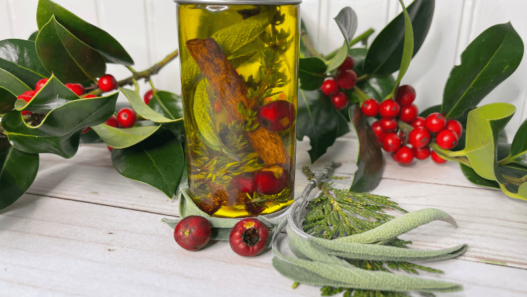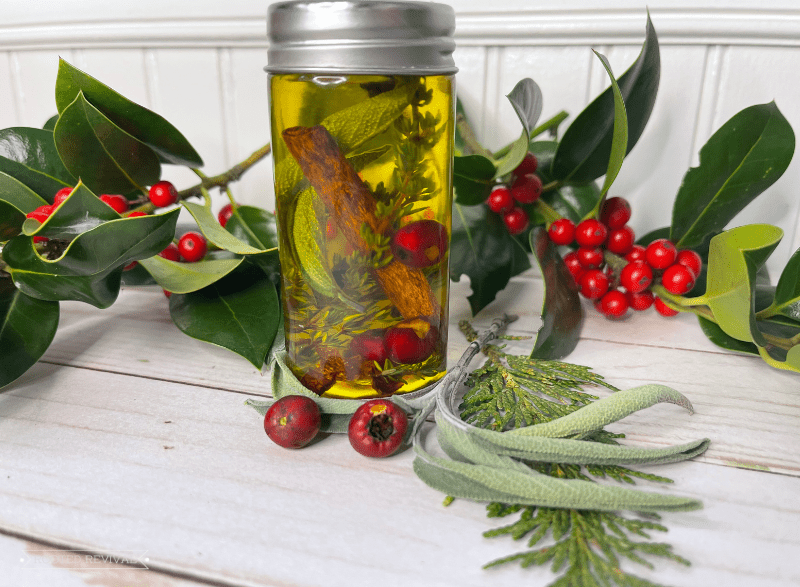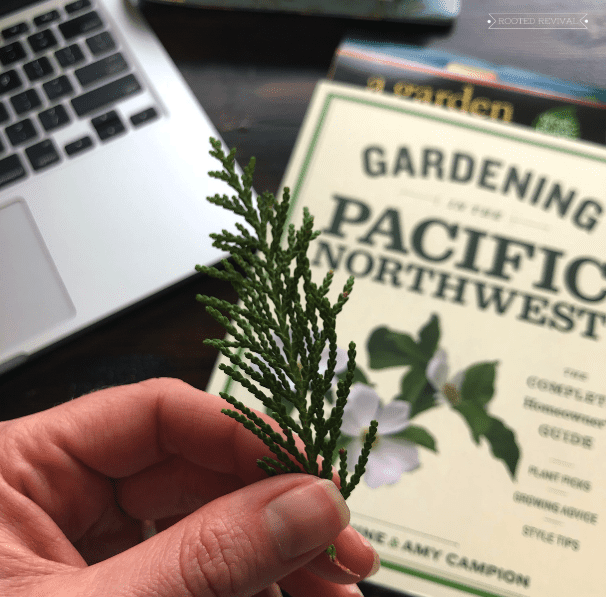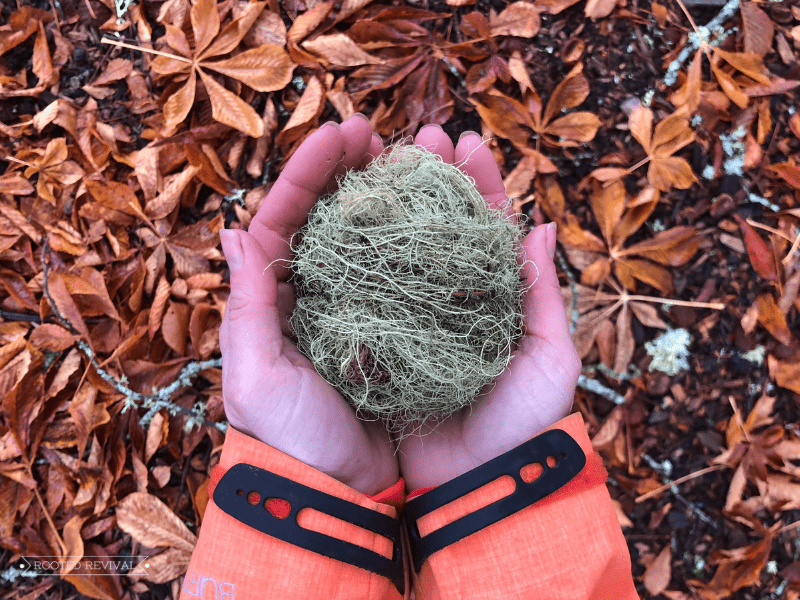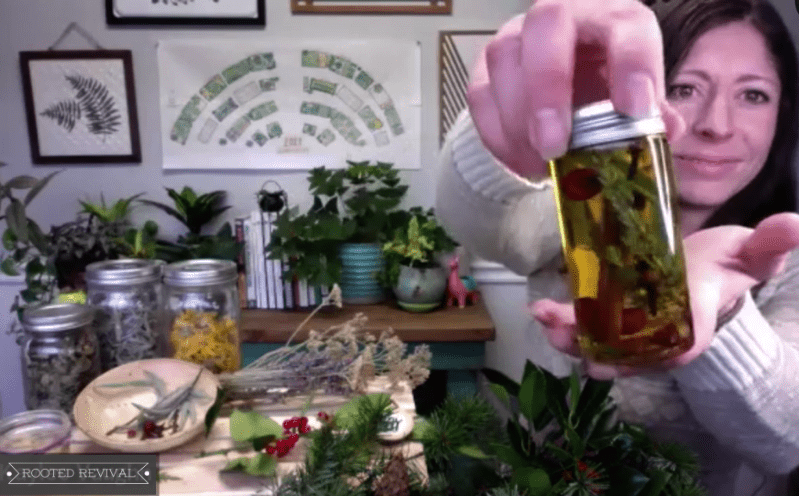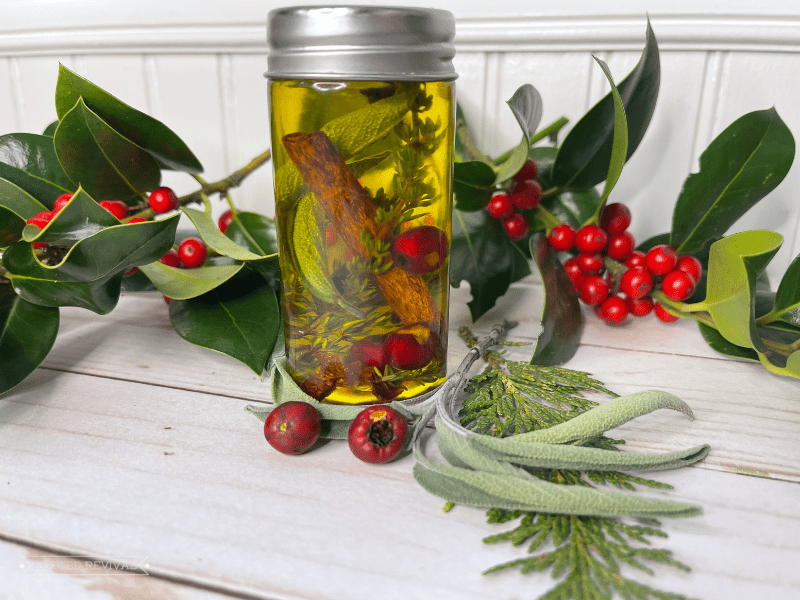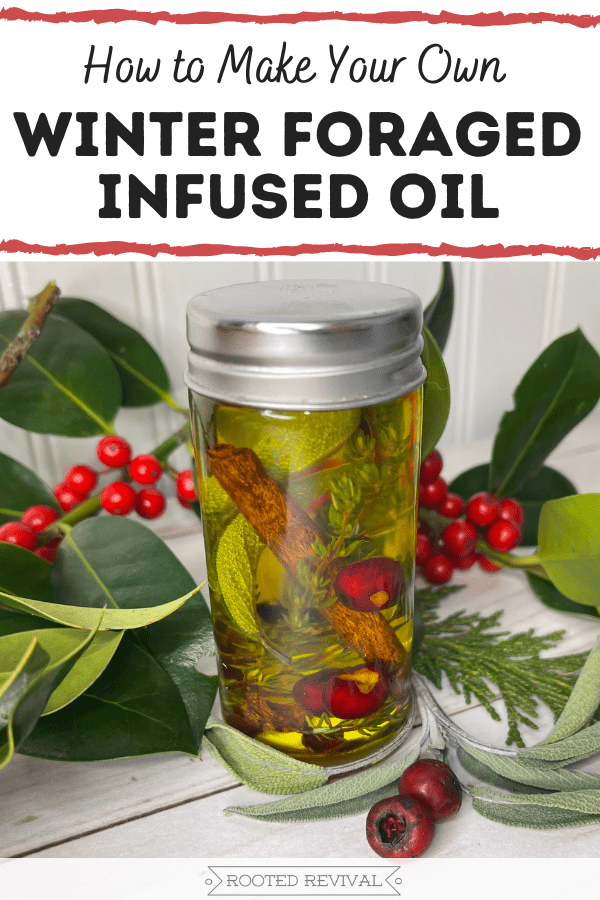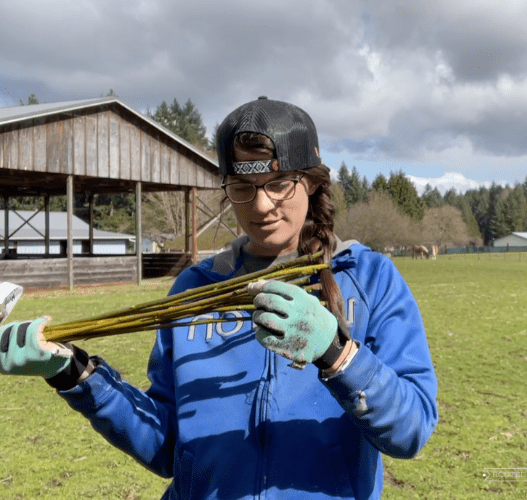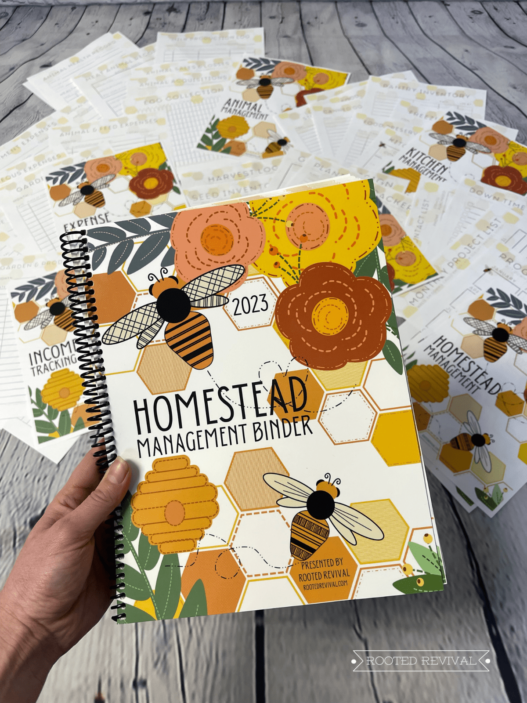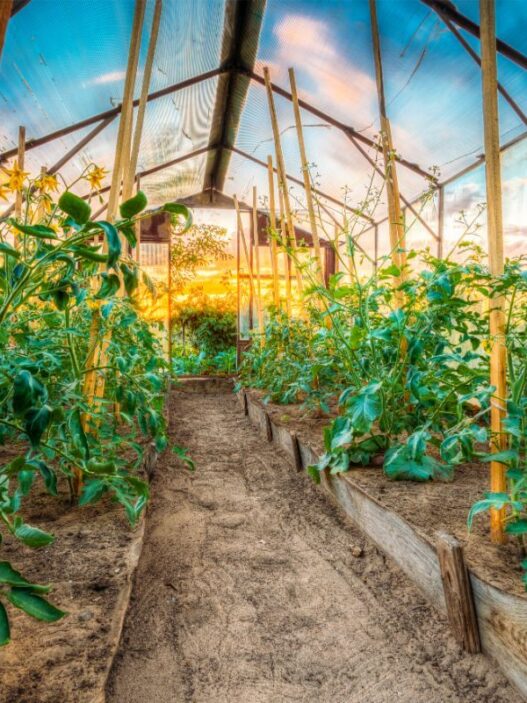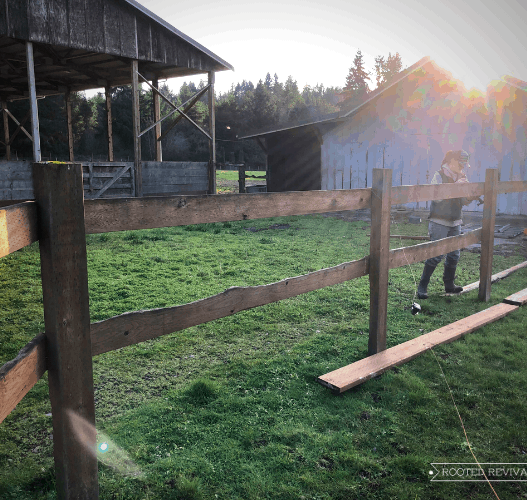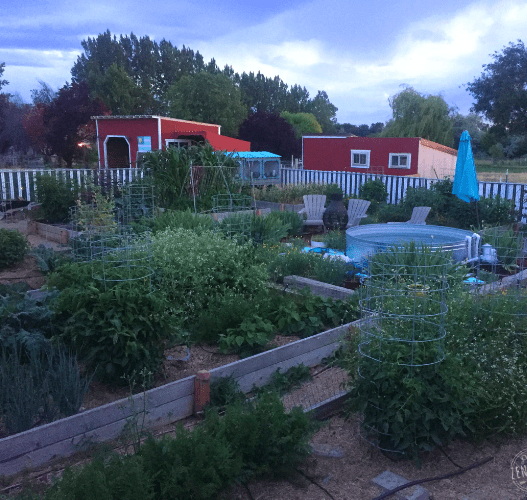Winter foraging provides a wonderful way to get outside and enjoy nature! Here are some quick tips to help you get started. Plus, how to use your foraged finds to make an easy DIY infused oil!
Winter foraging wasn’t always one of my favorite things. In fact, I rarely grew or foraged anything during the cold season. But, the more I fall in love with nature, the harder time I have staying inside! So, now, I grow and forage all winter long!
Foraging is a wonderful way to get to know the natural world that is all around you! I’ve found that foraging has helped me become more mindful and more observant. Plus, it turns every nature walk into a scavenger hunt!
There is still plenty to forage all winter long! Here are some quick tips to get you outside and help you start foraging this winter! Plus, there’s a recipe that you can follow to make a beautiful infused oil with your foraged finds!
Guidelines for Responsible Winter Foraging
Respect Seasonality
It’s super important to respect the seasonality of plants. Foraging and harvesting respectfully is one of the best ways that we can protect nature while still enjoying her bounty. It is, after all, our job to care for her in return for all the blessings and harvests she bestows on us.
Properly Identify
The most important part of responsible foraging is to positively identify the plant that you are foraging from. Field guides are great for this. There are some good photo ID apps, but I always back them up with thorough research to get a positive ID. And, of course, if you know an experienced forager, ask for their help!
Harvest Respectfully
Never take more than you need. This is even more important in the winter because plants are storing their energy to guarantee their survival. Over-harvesting in winter can be deadly for the plant. So harvest sparingly, ensuring that the plant’s needs are met before our own. When it comes to evergreens and lichens, I generally only harvest those branches and plants that have fallen from winter wind storms. This is one of the best ways to forage from natural areas, like the forest.
Forage Safely
Harvest from safe spaces only. I prefer to harvest on my own property or the properties of neighbors and friends (with permission) before venturing elsewhere. Even in a neighborhood, you may be surprised how many species you can find! It almost feels like a scavenger hunt! Plus, it’s a great activity to get yourself (or the whole family!) outside during winter!
The Best Plants for Winter Foraging
Herbs:
In a lot of regions, certain cold hardy fresh herbs are still readily available. Sage, rosemary, thyme, calendula, tarragon and parsley will generally be available throughout at least the early part of winter in most regions.
When harvesting herbs in the winter, harvest lightly. Over-harvesting can be hard on the plant if it is going dormant or is already in a stage of dormancy, which is common throughout winter. When you trim or harvest from the plant, it encourages it start producing new growth. And that can expend a lot of valuable energy that the plant needs to keep stored to survive the winter months! So, even if you have mild weather, avoid taking more than a few clippings. This will help keep the plant strong throughout winter.
And don’t forget all those amazing herbs that most people consider weeds! Plantain, dandelion, dock, and chickweed are all readily harvestable during the winter in most regions! I love adding these fresh winter greens to salads and soups for extra nutrition. They can also be used to make infused oils and salves. Most of them have incredible benefits for your skin tissues – perfect for those cold, cracked knuckles!
Winter is also a great time to use dried herbs from summertime! In fact, winter is my favorite time to dig into my herbal cabinet and make all sorts of creations like tea blends, salves and beeswax candles adorned with dried herbs!
Foraged Evergreens:
Winter wouldn’t be complete without some evergreens adorning the home! And the good news is that evergreens are very readily available in winter! I don’t even have to harvest them – I just wait for a wind storm to blow through! The wind generally does a great job of bringing me a bounty of evergreen boughs to use for decorations!
But you can use evergreens for so much more than just decor! Fir, pine, spruce, hemlock and juniper can all be used for medicinal and edible creations for gifting or keeping! Use them to make seasonal herbal teas, infused vinegars or infused oils – like the one below! You can also make evergreen infused salts and sugars! You can even use the conifer needles in shortbread cookies!
If you need some extra help identifying the different species of conifers, check out this post from Grow, Forage, Cook, Ferment!
Foraged Berries & Fruits:
People berry hunt more in summer, but there are still a handful of berries, drupes & haws that can be harvested during the winter. Some of my favorite winter “berries” include cranberries, rose hips and hawthorn haws.
We are lucky to be able to source fresh cranberries from local farms in our areas and have hawthorn and roses available on our property! These “berries” all pack a great amount of Vitamin C and bioflavonoids! They are great for you and your livestock, in fact! I let our horses graze the hawthorns regularly and here’s one way that I use rose hips to support our goats’ respiratory health.
If you live in a warm climate, you may even be lucky enough to have citrus readily available in the winter months! Persimmons, oranges, lemons, limes and even pomegranates are a beautiful addition to your foraged treasures! Jams and jellies can be made from most citrus and add a wonderful punch of color and flavor to any winter meal. You can also dry citrus to use in a variety of herbal teas and creations!
Foraged Lichens:
Winter mosses (technically lichens), such as usnea and reindeer moss, are great candidates for winter foraging!
Both of these lichens are edible, but neither is particularly tasty and will need to be leached before consuming. While they can be handy edibles in emergency or survival situations, I think most of us would prefer something else for our winter meals!
Luckily, you can use these lichens medicinally! Both have a long history of being used by indigenous people to support a healthy immune system – which we all need during the winter! The most popular way to use usnea is by tincturing it. This post from Chestnut School of Herbal Medicine (where I study herbalism) has even more info on usnea and its medicinal benefits!
How to Make a DIY Infused Oil From Your Winter Foraged Finds!
For me, one of the most rewarding parts of winter foraging is creating a beautiful herbal product to add to my herbal medicine cabinet or to share with others. Which is exactly how this gorgeous winter infused oil came to be!
I also got to share my love of winter foraging and demonstrate how to make this oil with Planted Places during a virtual workshop earlier this month! Each month, Planted Places holds a special educational workshop for their members. It’s one of the ways that they are encouraging more people to connect with nature and grow sustainably. And it’s one of the reasons that I’m so happy I get to partner with them! Definitely go check out everything they have to offer if you are looking for new, fun ways to expand your garden in any sized space!
Benefits of infused oils:
An infused oil takes on many of the properties of the plants that are infused in it. And this infused oil can play double duty – you can use it in the kitchen or use it to make a salve! It is so versatile based on what you decide to include in it. Every plant has different benefits, so you can truly tailor the oil to the purpose you want to use it for!
For instance, you could include plants that are high in Vitamin C and immune-supporting properties for added benefits in your culinary creations. Or, you could use powdered orange rinds and calendula to create an oil that would be soothing and brightening for skin. The possibilities are truly endless!
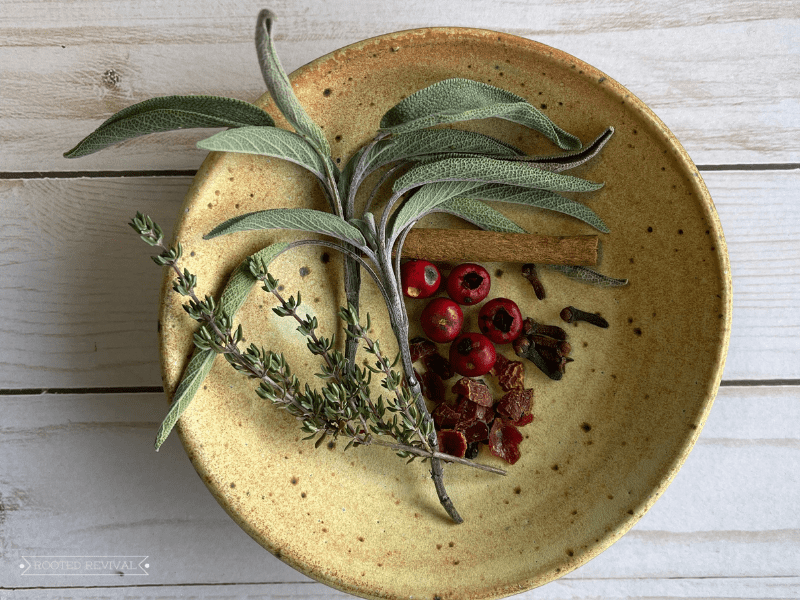
Personally, my goal with the oil was to create a beautiful and gift-able infused oil using winter foraged plants and popular seasonal spices. I used a glass spice container to makes the perfect sized little homemade gift for neighbors, friends or anyone else! It could also be a really nice stocking stuffer! I included a few sprigs of sage and thyme, a cinnamon stick, a few cloves, dried rose hips and fresh hawthorn berries.
Creating your infused oil:
This infused oil can be whipped up in just a few minutes. You can gift it to loved ones or keep it for yourself. Either way, it’s a beautiful way to capture winter’s bounty and enjoy your winter foraging efforts! Here’s the full recipe:
Don’t forget to save this post for later – Pin it!
